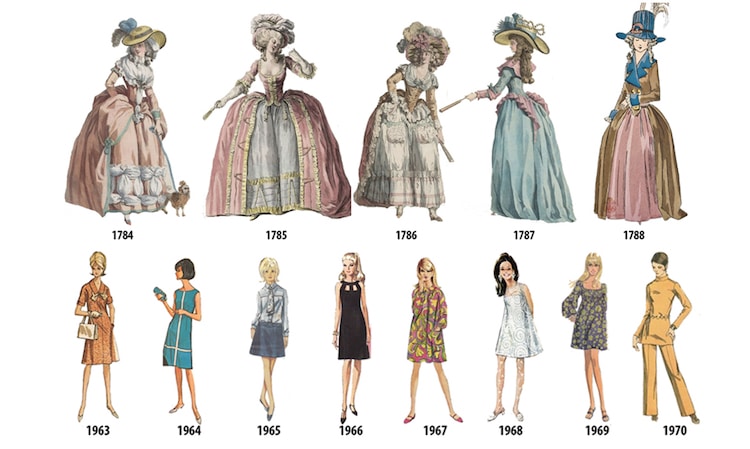Fashion is more than just clothing; it’s a form of self-expression, a cultural statement, and an ever-evolving art form that mirrors the societal shifts and technological advancements throughout history. From the practical furs and animal skins of our prehistoric ancestors to the intricate designs gracing the runways of today, clothing has undergone a remarkable journey of transformation. This article delves into the evolution of clothing, tracing its path from necessity to high art.
The Dawn of Dress: Practicality and Protection
The earliest forms of clothing were born out of necessity. Our ancestors needed protection from the elements, and so they turned to nature, using animal skins and furs to shield themselves from the cold. As time progressed, they learned to stitch these materials together using bone needles and natural fibers, marking the beginning of tailored attire. The discovery of fire and the subsequent ability to cook food allowed for the development of finer motor skills, which in turn led to more sophisticated clothing techniques.
Ancient Civilizations: Status and Symbolism
With the rise of ancient civilizations, clothing began to take on new meanings. It became a symbol of status, wealth, and power. In Egypt, for example, the quality and type of linen garments indicated one’s social standing. Meanwhile, in the Indus Valley, cotton was cultivated and spun into cloth, revolutionizing the textile industry. The intricate patterns and dyes of ancient Chinese and Japanese garments showcased not only the wearer’s status but also the advancements in textile technology.
The Middle Ages: A Tapestry of Change
The Middle Ages brought about significant changes in fashion, with the introduction of tailored clothing that accentuated the body’s shape. This period saw the rise of sumptuary laws, which regulated what people could wear based on their social class. Despite these restrictions, fashion continued to evolve, with the introduction of the corset and the codpiece, reflecting the shifting cultural and social landscape.
The Renaissance: Rebirth of Style
The Renaissance period was marked by a renewed interest in classical art and culture, which influenced fashion by emphasizing symmetry, proportion, and balance. The clothing of this era was elaborate and decorative, with rich fabrics and intricate designs that reflected the wearer’s wealth and status. The invention of the printing press also played a crucial role in spreading fashion trends across Europe.
The Industrial Revolution: Mass Production and Modernity
The Industrial Revolution transformed the fashion landscape with the introduction of mass production. Machines like the spinning jenny and the power loom made clothing more accessible to the general population. This period also saw the emergence of ready-to-wear clothing, which democratized fashion and made it more affordable for the masses.
The 20th Century: Innovation and Individuality
The 20th century was a time of rapid change and innovation in fashion. The invention of synthetic fibers like nylon and polyester revolutionized the industry, making clothing more durable and easier to care for. The century also witnessed the rise of haute couture, with designers like Coco Chanel and Yves Saint Laurent becoming household names. The youth culture of the 1960s and 1970s further transformed fashion, emphasizing individuality and self-expression.
The Digital Age: Connectivity and Sustainability
Today, we live in the digital age, where social media and the internet have made fashion more accessible than ever before. Trends can go global in a matter of hours, and consumers have unprecedented access to a vast array of styles and designers. However, this has also led to concerns about the environmental impact of fast fashion. As a result, there is a growing movement towards sustainability in the fashion industry, with a focus on ethical production, recycling, and upcycling.
The Future of Fashion: A Look Ahead
As we move forward, fashion continues to evolve, with technology playing an increasingly significant role. Smart fabrics that can change color or provide health benefits are on the horizon. Virtual and augmented reality are changing the way we shop and experience fashion. The future of fashion is likely to be as diverse and dynamic as the history that has shaped it, with a continued emphasis on sustainability, innovation, and the expression of individuality.
In conclusion, the evolution of clothing is a testament to human ingenuity and creativity. From the basic need for protection to the complex interplay of culture, technology, and self-expression, fashion has been a constant yet ever-changing aspect of human society. As we look to the future, it’s clear that fashion will continue to reflect the times, adapting and transforming in ways we can only begin to imagine.
